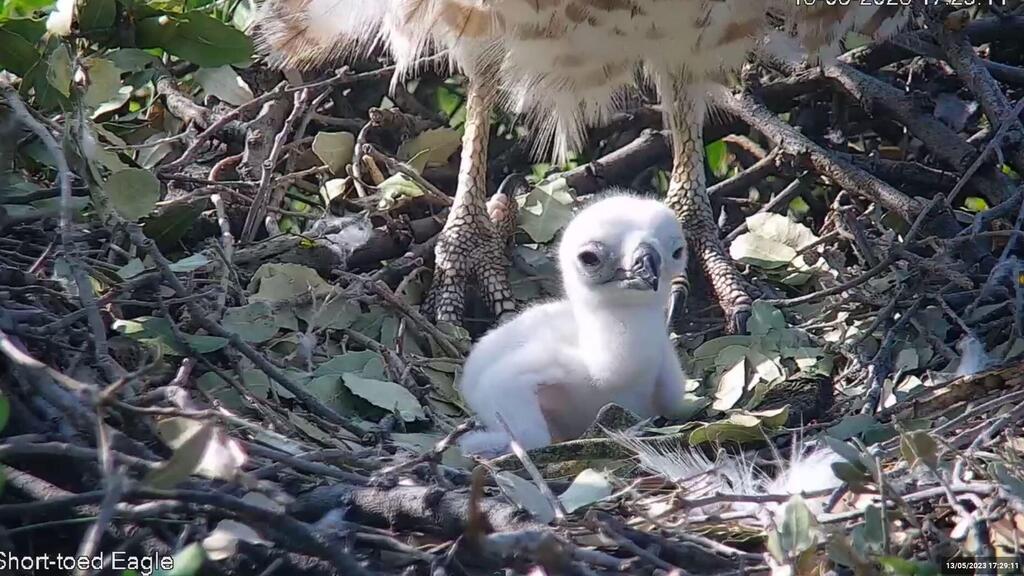Getting your Trinity Audio player ready...
With sheer delight, the "Live Birds of Prey" project has witnessed the miraculous arrival of two precious baby Egyptian Vulture chicks and an adorable Snake Eagle chick. These endangered species hatched under the watchful eyes of the project's cameras, filling all hearts with immense joy.
Dr. Gilad Friedman, the project's director, expressed his elation at the chicks' hatching. "After 42 days of incubation, these two rare chicks emerged, braving the perils of extinction that once loomed over their existence in Israel," he said of the Egyptian Vulture chicks.
"When the state of Israel was established their presence flourished, with hundreds of nesting pairs adorning the landscapes. Sadly, their population has dwindled due to factors like secondary poisoning, habitat loss and tragic electrocutions," he added.
Presently, the population of Egyptian Vultures stands at a mere 60 breeding pairs, scattered across the Golan Heights, Judean Desert, and the Negev. "Faced with dire circumstances, we have established breeding nuclei to combat this plight," according to Friedman.
"Our dedication to preserving Egyptian Vultures in Israel is unwavering, and we eagerly anticipate the annual nesting season of this extraordinary species, capturing each moment through our lenses.
"Every hatching chick holds profound significance, as it carries the weight of ensuring the survival of the entire population. With hearts filled with hope and fingers tightly crossed, we offer our blessings to each precious arrival. Notably, the nest of this vulture pair is nestled in the captivating expanse of the Negev," he said.
In addition, following a 46-day incubation period, a Snake Eagle chick emerged, a descendant of a devoted pair nesting in the central region.
Friedman joyfully recounted the eagle's journey: "After two years of unsuccessful attempts, a new male graced our nesting territory last year, igniting renewed hope within us all. He successfully courted the female, and together they experienced the miracle of hatching a chick."
He continued: "This year, as they returned from their African sojourn, they reunited, constructed a shared nest, engaged in courtship rituals and mated.
"In recent days, our cameras captured the thrilling moments as the first hairline cracks materialized on the surface of the egg, sparking a wave of exhilaration among viewers. With each passing day, the cracks widened, occasionally revealing glimpses of the lively movement within. Then the chick emerged from its protective shell," he revealed.
"To sustain their growth, the young chicks will be nurtured each day with two to four animals prey hunted for them, predominantly comprising sizable snakes. Just yesterday, chicks ate a large snake and even a chameleon," Friedman proudly shared.
Parents and chicks
(Footage: Birds of prey live feed)
Dr. Yoav Perlman, director of the BirdLife Israel Center at the Society for the Protection of Nature, said: "These two species, being migratory in nature, undertake perilous journeys each winter as they traverse the regions south of the Sahara. They face grave perils along their migration routes and in critical habitats, making it crucial for us to provide unwavering protection.
"We hold heartfelt aspirations for the growth and resilience of these young chicks, envisioning them as magnificent birds of prey who will join the ranks of the 2023 generation, dedicated to preserving and rejuvenating the imperiled raptor population," he added.





